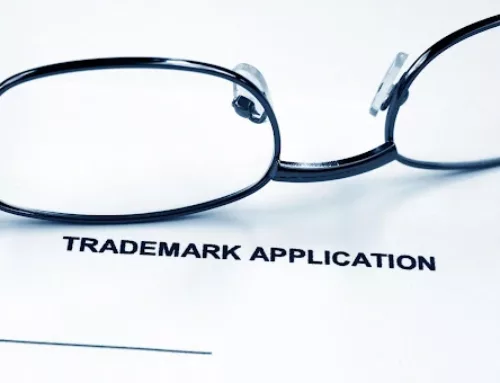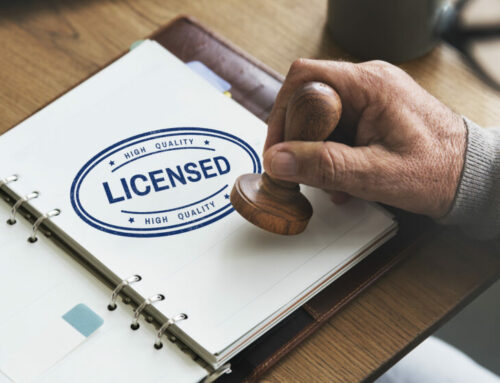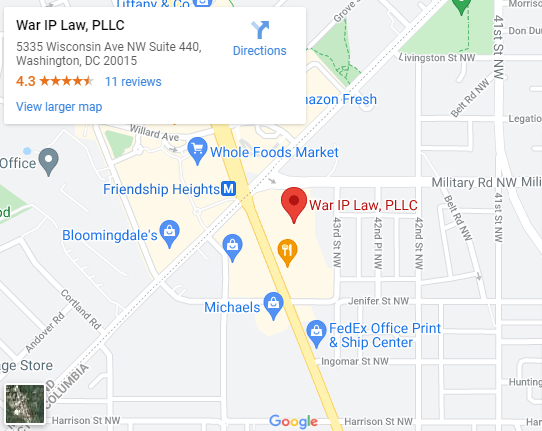Trademark applications filed as “intent to use applications” require that a Statement of Use and an acceptable Specimen of Use are filed prior to the registration of the mark. The Statement of Use states that the trademark is currently in use in interstate commerce. The United States Patent and Trademark Office (USPTO) allows applicants to file one extension request either alongside or after the statement of use, but the extension must be filed in the same 6-month period that the statement was filed. The insurance extension request can give applicants additional time to create new specimens in case the USPTO rejects the original specimen included with the Statement of Use. At War IP Law, PLLC, our team of experienced trademark lawyers helps our clients with all facets of trademark law, including extensions of time. You can learn more by contacting our office at (202) 800-3754.
What Does Specimen Mean in Trademark Law?

A specimen is a sample of a trademark as it is used in commerce. Those who wish to file for trademark registration must provide samples to the USPTO. Specimens provide evidence of how the trademark is currently being used in the marketplace in association with the goods or services included in the trademark application. Consumers see the specimen when they decided whether or not to purchase the related goods and services. Applicants submit their specimens as photos, scanned copies, printouts, or screen captures, rather than physical specimens.
Trademark Specimens for Services
For applicants that use their trademarks in connection with a service, the specimen should show that the trademark is used in commerce with their current services in a way that directly links the trademark with these services. For example, the applicant could submit their specimen in the form of an advertisement, website printout, brochure, or other marketing material that uses the trademark for advertising services provided by the business. Other examples might include business signs or company vehicles that show the trademark.
Trademark Specimens for Goods
Trademark specimens for goods must show how the trademark is used in commerce in connection with the applicant’s current goods. This connection must show a direct correlation between the trademark and the goods provided under the trademark. Common examples identified by the USPTO include:
- Labels or tags that include the trademark and are attached to goods provided by the applicant
- Product containers or packaging that shows the trademark
- A website printout showing the trademark on a site that sells the applicant’s goods
What Is a Statement of Use?
A Statement of Use is required for trademark applicants who have already filed an Intent to Use trademark application but were not using their mark in commerce at the time of that original application. This document tells the USPTO that the applicant has begun using the applied-for trademark in connection with the applied-for goods and services in commerce.
Many applicants file their trademark application before they are ready to use their mark in commerce. These applicants will be required to file a Statement of Use and an acceptable Specimen of Use before their mark is registered. These applicants may file a Statement of Use within six months of receiving their Notice of Allowance from the USPTO. The Notice of Allowance is a document that the USPTO sends to applicants after a trademark application has been approved, but not yet registered. You can learn more about filing a Statement of Use and other trademark matters by speaking with the dedicated intellectual property attorneys of War IP Law, PLLC.
Why Should You Request a Trademark Insurance Extension
Trademark applicants should strongly consider filing for an insurance extension to protect themselves in case the USPTO rejects their trademark specimen. If the specimen is rejected, the applicant is required to include substitute specimens that were in use before or during the appropriate six-month period. These specimens cannot be new: they need to have been in use before or during the appropriate six-month period. Specimens that show use after the deadline are not eligible to be used as substitute specimens.
Of course, not all applicants will have eligible substitute specimens at the time they file their application. An insurance extension of time protects these applicants by giving them an extra six months to prepare new specimens, put these specimens in use in commerce, and submit them to the USPTO for approval. Applicants who have their original specimens rejected without any eligible substitute specimens and insufficient time to create and use new specimens are at risk of having their application abandoned.
Common Reasons for Trademark Specimen Rejection
The USPTO will reject a Statement of Use if the applicant does not include the required specimen, the specimen is not verified, or the specimen does not meet the USPTO’s requirements.
Some of the most common reasons for specimen refusal include:
- The specimen does not show the same trademark as the drawing submitted with the application.
- The specimen does not show the trademark use in connection with the applied-for goods and services.
- The applicant’s use of the trademark is not shown in the specimen.
- The specimen is not in actual use in commerce.
- The specimen is not the appropriate type for the applicant’s goods and services.
How Do You Overcome a Rejection of a Specimen filed with a Statement of Use?
The United States Patent and Trademark Office has identified four options for applicants who have had their trademark specimens rejected:
Verified specimen – Applicants may verify the filed specimen.
- Submit a substitute specimen – This is the recommended option for those who previously submitted a specimen that was not accepted but they have a different acceptable specimen that was in use before, or during the applicable time period.
- Provide URL and date for webpage submissions – This is an option if the specimen was a webpage that was refused because the URL and date of access and printing were not included.
- Submit evidence that specimen was in use at point-of-sale – Applicants should consider this option if their specimen was rejected due to being used as print advertising material, even though it was identified as a display for the applicant’s goods.
Learn More From Our Trademark Attorneys
If you have questions regarding a rejected trademark specimen or any other trademark law matter, War IP Law, PLLC is here to help. Our team of veteran trademark attorneys helps our clients navigate the trademark registration process and protect their intellectual property. Give us a call today at (202) 800-3754.





